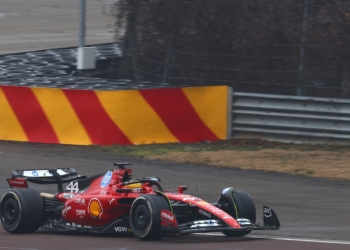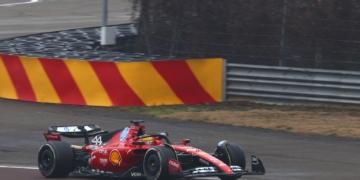Formula 1 is one of the most popular sports in the world. The engines’ roar, the cars’ speed, and the drivers’ skills all come together to create an incredible spectacle.
For fans of the sport, watching F1 is more than just a pastime; it is a passion.
This 2023 Formula 1 season, in particular, promises to be a fascinating one, and the cars that will be taking part are a big reason why; since they are some of the most technologically advanced machines in the world.
May the best car win…
This season is set to be one of the most exciting in recent years, with a number of new car designs and technologies being introduced.
As an aside but related very much to Formula 1, one of the most anticipated road car designs for 2023 will be the all-new Mercedes-AMG Project One. This hybrid vehicle, with many features based on the AMG Mercedes Formula 1 car, features a 1.6-liter V6 engine and an electric motor and is expected to deliver exceptional road performance.
On track, the Red Bull Racing team have introduced their new Formula 1 challenger, the RB19, which features advanced aerodynamics and a highly-efficient powertrain.
Ferrari is also expected to be highly competitive in 2023, with their new SF23 challenger featuring an upgraded engine and improved suspension system. And McLaren is another team to watch out for, with their new MCL60 car boasting an innovative design and a high-tech power unit.

Other notable cars competing this year in the 2023 Formula 1 season include the all new Williams FW43B, and the Alfa Romeo C43. All of these cars are expected to push the limits of what is possible in terms of speed and performance.
Nevertheless, the cars mentioned above are just a few examples of the advanced technology and design used to create the ultimate racing machines.
But one thing is sure: with so many top teams and cars in the mix, fans can look forward to an exciting season of high-speed racing, fierce competition, and thrilling battles for the championship title.
New rules for 2026 means new cars
Each team has spent countless hours and millions of dollars developing their cars, and the results are truly impressive. The new regulations for the 2026 season will greatly impact the car design overthe three years when the new engine regulations come into play. Introducing this new power unit will be one one of the biggest changes in F1 for a number of years.

This new engine unit will be continue to be a hybrid one as the current one is but instead of the international combustion engine (ICE) supplying the majority of the power, from now on the power supply will come equally from the ICE and the electric motors on a 50/50 ratio.
This new unit aims to improve cars’ efficiency and reduce their environmental impact. The new power unit is also expected to make the cars faster, with teams predicting lap times up to three seconds faster than the current cars.
The new regulations will also result in changes to the design of the vehicles. One of the most noticeable being is the introduction of a simplified front wing.
This new wing is conceived to reduce the turbulence the cars create, making it easier for them to follow each other and overtake. The rear wing has also been simplified, with a lower and wider profile to improve aerodynamic efficiency.
Another recent change to the regulations, and introduced last year, was the introduction of 18-inch wheels. This change was made to improve the relationship between road tyres for normal cars on the road so as to allow some trickle down technology that will improve tyres for the average motorist too. The new wheels have also improved performance, with teams reporting better grip and handling.

When the new power train regulations come into effect in 2026, there will also be changes to the bodywork of the cars. The size of the vehicles will be reduced slightly, with a maximum width of 2000 mm and a maximum length of 5750 mm.
This size reduction is designed to improve their agility and make them more nimble around the corners.
The bodywork will also been simplified, with fewer aerodynamic elements allowed. This change is designed to reduce the amount of downforce cars generate, making driving more challenging.
One of the most exciting aspects of the new cars will be the return of ground effect. Ground effect is a technique that uses the airflow beneath the vehicle to create downforce.
The technique was banned in the 1980s due to safety concerns, but it is set to make a return to Formula 1. The reintroduction of ground effects is expected to result in more downforce and better grip, making the vehicles faster and more exciting to watch.
The teams are already working hard to prepare their cars for 2026 and as with the introduction of new regulations; there is a sense of excitement and anticipation among fans about how the cars will perform.
Add that to the fact that Formula 1 has the best racing drivers in the world competing in some of the most advanced cars ever built you can count on an amazing season this year and in the years to come when the new engine regulations are introduced in 2026!









